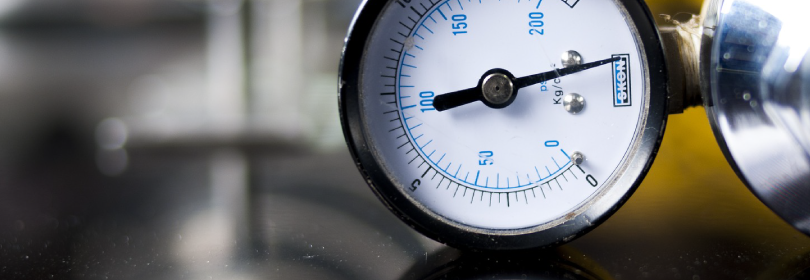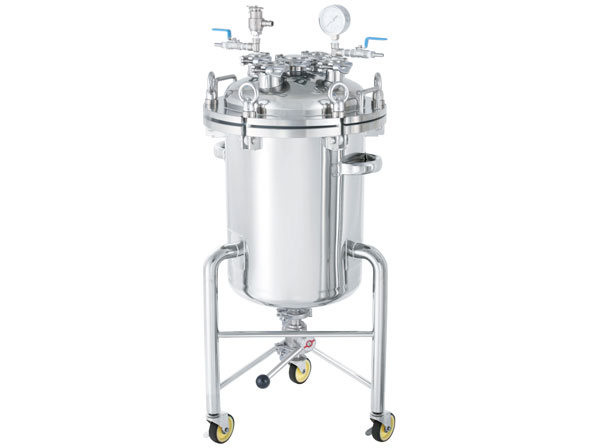
A pressure vessel is a container intended to apply pressure to the inside of a vessel.
In Japan, pressure vessels are classified into several types according to their specifications and contents. Therefore, this column explains the standards for pressure vessels in Japan, focusing on First Class Pressure Vessels and Second Class Pressure Vessels.
Contents of this article
- Pressure vessels are divided into First Class Pressure Vessels, Second Class Pressure Vessels.
- The key point is whether or not gas is generated inside the vessel when pressure is applied.
- Pay attention to laws and regulations, and do not neglect inspections.
Pressure vessels can be dangerous under pressure, so standards are established according to the magnitude and conditions of the pressure.
If they are not strong enough, serious accidents can occur. In Japan, the Industrial Safety and Health Act and Ordinance on Safety of Boilers and Pressure Vessels specify the structure of pressure vessels in detail.
Vessels are classified according to their size and the amount of pressure they handle, and some vessels require certification.
Classifications include First Class Pressure Vessel, Small-sized Pressure Vessel, Second Class Pressure Vessel, and (simplified) vessels.
Points to classify vessels
Pressure is applied and gas is generated inside the vessel
→ First class pressure vessel
Pressure is applied but no gas is generated inside the vessel
→ Second class pressure vessel
Compared to liquids, gases tend to change in volume when pressure is applied. If a container were to rupture, the change in internal pressure would cause a sudden expansion in volume, and the risk posed by a container handling gas is very great. Therefore, the presence or absence of gas generation has a great deal to do with the structure of the container. Below are the definitions of each type of container.Classification of pressure vessel
1-1. First Class Pressure Vessels
First class pressure vessels are pressure vessels of a large scale. A First class pressure vessel is a vessel that accepts a liquid that reacts with another liquid in the vessel to produce vapor, or a liquid that heats to produce vapor.
First class pressure vessels are also used to store liquids with temperatures above the boiling point at atmospheric pressure (e.g., 100°C above the boiling point at atmospheric pressure). (For example, when water with a boiling point of 100°C at atmospheric pressure is heated to 120°C using pressure.)

a. Containers that generate vapor inside or generate vapor inside and the pressure inside the container exceeds atmospheric pressure.
b. Vessels that contain liquids with temperatures exceeding the boiling point at atmospheric pressure. Examples: Steamers, sterilizers, refiners, reactors, nuclear power related vessels, evaporators, distillers, steam accumulators, etc.
1-2. Small-sized Pressure Vessel
Among First Class Pressure Vessels, relatively small vessels that meet the following conditions are classified as “Small sized Pressure Vessels”. Unlike First Class Pressure Vessels, they do not require a manufacturing license, etc., but are required to undergo verification testing at the time of manufacture, etc., and annual voluntary verification testing.
First Class Pressure Vessels as described above that meet the following conditions.
a. Vessels to be used at a gauge pressure of 0.1 MPa or less, with a content volume of 0.2 m3 or less.
b. Vessels with a gauge pressure of 0.1 MPa or less, an inside diameter of 500 mm or less and a length of 1000 mm or less.
c. Containers whose product of the maximum working pressure [MPa] and the internal volume [m3] is 0.02 or less.
1-3. (Simplified) Container
Certain vessels that meet the conditions indicated for First Class Pressure Vessels (new gas is created inside the vessel) but are even smaller than Small sized Pressure Vessels are commonly referred to as “(simple) vessels”. This classification itself is defined by law, but the name is not defined.
Unlike First Class Pressure Vessels, vessels that conform to the following conditions are not obligated to undergo inspections by agencies, etc. However, they must be manufactured to specifications in accordance with the “Structural Standard for Simple Boilers, etc.” and their performance must be confirmed through voluntary testing. This is a mandatory requirement stipulated by law.
Vessels that meet the
a. Vessels with a gauge pressure of 0.1 MPa or less and a content volume of 0.01 m3 or less
b. Vessels whose product of maximum gauge pressure [MPa] and internal volume [m3] is 0.001 or less
c. Vessels used for ships subject to the Ship Safety Law and those subject to the Electricity Business Law, the High Pressure Gas Safety Law, the Gas Business Law, or the Law Concerning Maintenance of Safety and Proper Trade of Liquefied Petroleum Gas.
2-1. Second-Class Pressure Vessels
Under the condition that no new gas is produced when pressure is applied (not applicable to First Class Pressure Vessel), if a gas with a gauge pressure of 0.2 MPa or higher is held inside the vessel, it falls under the category of Second Class Pressure Vessel. The certification at the time of manufacture and the voluntary certification once a year are obligatory.
a. Containers with a gauge pressure of 0.2 MPa or higher and a content volume of 0.04 m3 or higher
b. Containers with a gauge pressure of 0.2 MPa or higher, an inside diameter of 200 mm or more for the body, and a length of 1,000 mm or more.
2-2. (Pressure gas holding) vessel
Some vessels that do not meet the aforementioned are commonly referred to as (pressure gas holding) vessels, although they are used for the same purposes as Second Class pressure vessels.
Like (simple) vessels, they must be manufactured according to the specifications set forth in the “Simple Boiler Structural Standard” and their performance must be confirmed through voluntary testing. However, there is no obligation to have an inspection conducted by an organization, etc., as is the case with Second Class pressure vessels.
<Conditions>
Vessels that hold gas with pressure exceeding atmospheric pressure inside, excluding 1-1 First class pressure vessel (where gas is newly generated) and 2-1 Second Class pressure vessel (pressure of 0.2 MPa or higher), and which fall under the following conditions.
a. Vessels with a content volume exceeding 0.1 ㎥.
However, acetylene generators and those used for ships subject to the Ship Safety Law and those subject to the Electricity Business Law, High Pressure Gas Safety Law or Gas Supplier Law are excluded.
Pressure Vessel Fabrication at Nitto Kinzoku Kogyo
We are capable of manufacturing pressure vessels except for First class pressure vessels. Below you can see our standard lineup of pressure vessels.
In addition, we can also manufacture pressure vessels with some customized models from the above lineup or completely custom-made to meet the customer's needs.
Please feel free to contact us.
Tag Related Posts
- No related posts.

